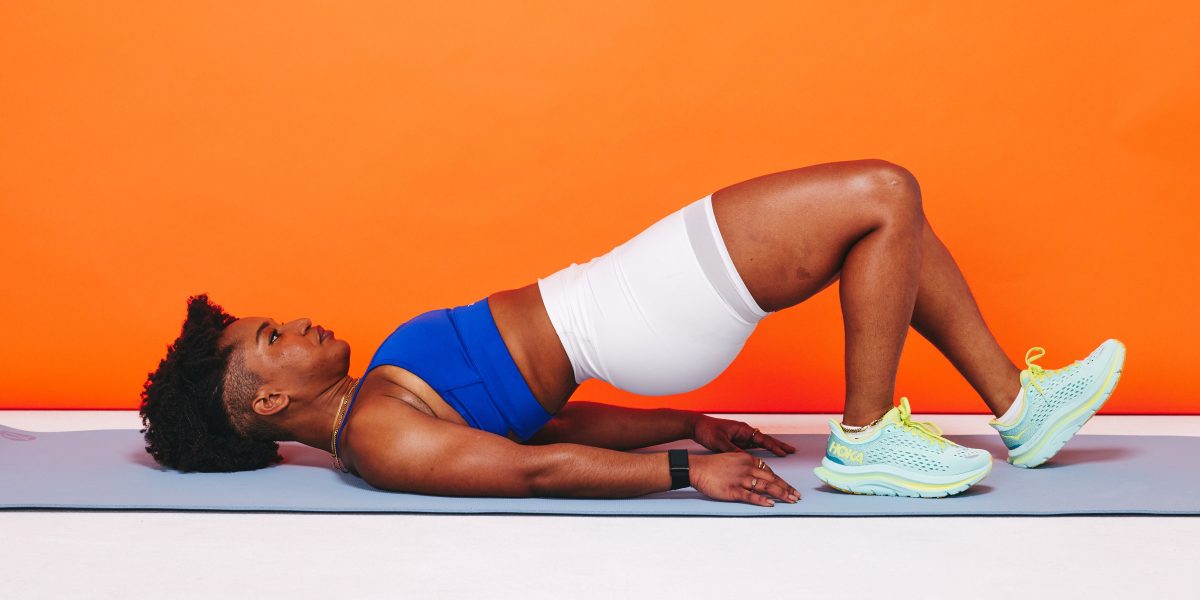If you think about how you move in everyday life, lots of it is on one leg—whether you realize it or not. Jogging to make your bus, stepping into your car, or putting on your pants all require single-leg strength and stability. But when you’re at the gym, so many exercises (think: sumo squats, Romanian deadlifts, even box jumps) have you working bilaterally. There’s nothing wrong with these moves, but they might not be working your muscles as functionally as they could be.
That’s where B-stance exercises come in. Sometimes called kickstand or split stance, B-stance puts most of the weight into one foot, making it a more accessible way to train than a completely single-leg stance—which can be pretty daunting, since one leg is doing all the work—while still bringing the same benefits. This can be a smart way to build up the strength of each individual leg. It’s what helps gymnasts like Suni Lee, say, pull off mind-boggling jumps, turns, and twists on a balance beam, sure, but it also helps us mere mortals do things like climb stairs or simply lift more weight when we deadlift.
Yet too many of us overlook this option. “If you’re not thinking about, ‘I need to create balance within my body,’ you’re probably not going to say, ‘I need to infuse [this kind of] work into my routine,’” Teddy Savage, CPT, national lead trainer for Planet Fitness, tells SELF. “But you absolutely should.” Here’s why.
Wait, what exactly does “B-stance” mean?
In a B-stance position, one leg takes on about 80% of the work, while the other is placed next to it lightly, taking on the remaining 20% or so mainly for balance and stability, Savage says. To get into position, you simply step one foot slightly back with your toe planted and heel lifted, placing your toes roughly in line with your opposite heel. (If you need to place your toes a little further back to make the position more comfortable, just be sure to keep your hips aligned and your back leg bent.) Savage recommends thinking of your legs on a two-lane road; your legs should remain hip-distance apart so they stay in their own lanes even though one is further back. The leg of the foot that remains planted is doing most of the work; the other—the one with your heel up—only takes on a little.
You can think of that back leg like “a kickstand for a bicycle,” New York-based trainer Kristie Larson, CSCS, tells SELF. “We’re not supporting the full weight of the bicycle on the kickstand, but it is helping make sure that we don’t tip over.”
Some of the most common exercises where you’ll see people rocking B-stance are squats, Romanian deadlifts, and hip thrusts. Really, “any type of a hinging movement,” Savage says. (In the case of a hip thrust, instead of bringing the toe back on your kickstand leg, you place that heel forward, roughly in line with the toe of the foot of the leg you’re working.)
What are the benefits of B-stance exercises?
So what’s the point of getting into this middle ground between training on two feet and one? “It’s a way to start moving toward unilateral exercise or to help address imbalances side-to-side with less of a balance demand than doing something fully on a single leg,” Larson says.
